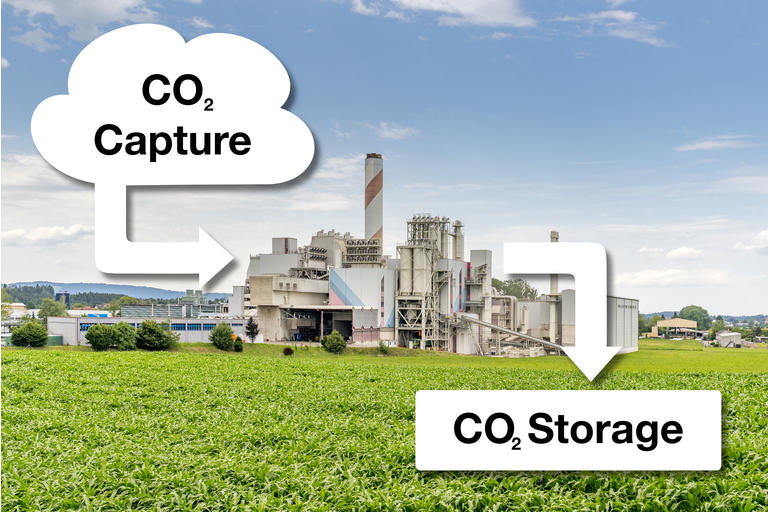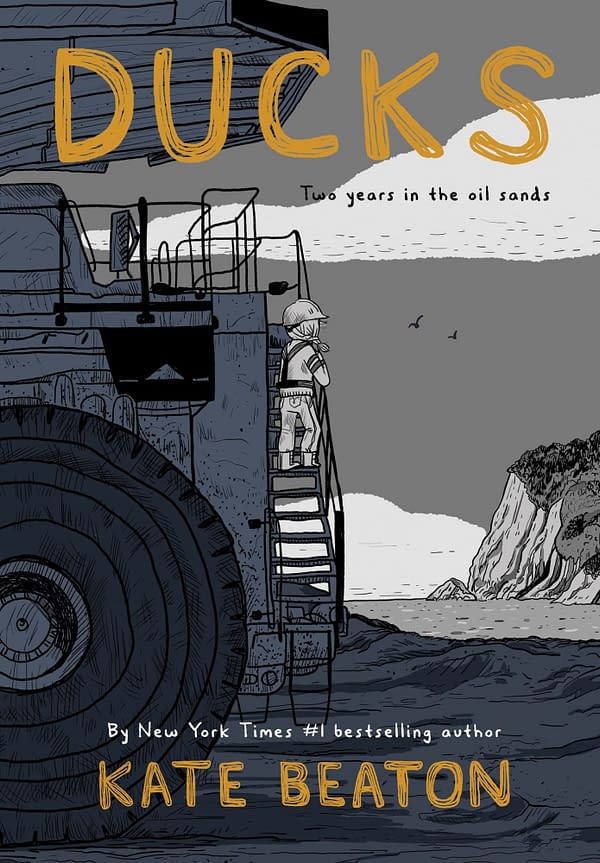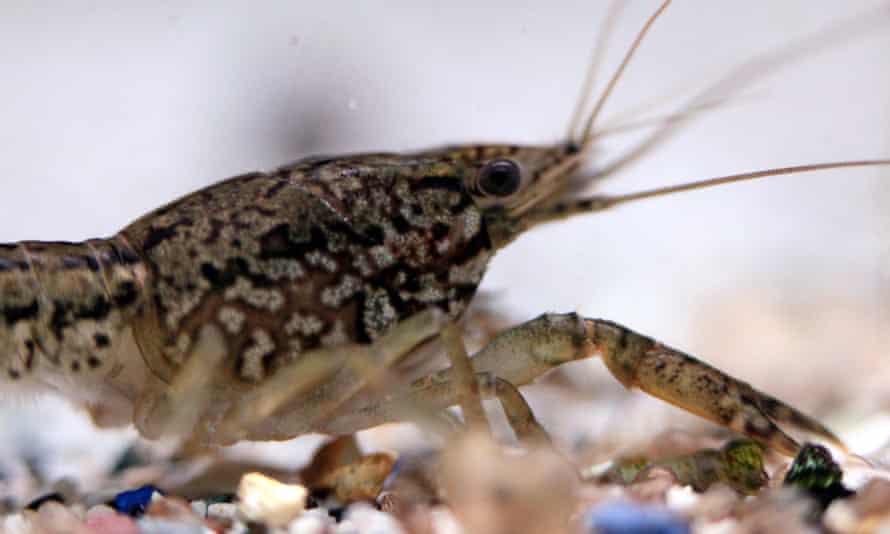Plans to capture CO2 from coal plants wasted federal dollars, watchdog says
The DOE funded projects that never came to fruition
By Justine Calma@justcalma Dec 30, 2021,
/cdn.vox-cdn.com/uploads/chorus_image/image/70331212/643866618.0.jpg)
Water vapor rises from the NRG Energy Inc. WA Parish generating station in Thompsons, Texas, U.S., on Thursday, Feb. 16, 2017. The plant was home to the Petra Nova Carbon Capture Project, until it shut down in 2021 because of high costs.
U.S. Government Accountability Organisation Weighs In On Carbon Capture While Exxon Soldiers On
Summary
- Exxon Mobil makes CCS a major plank for new business; the Government Accountability Office questions CCS programs funded by DOE.
- DOE funding of $1.1 billion (matched by industry) produced 3 operational CCS facilities (out of 11) and one of these ceased operations soon after being established.
- The IEA is bullish about CCS but the story is more hope than reality.
- CURE (Coalition United for a Responsible Exxon) makes 7 strong recommendations, including an independent Chair, new CEO, net zero target, cease lobbying against climate action.
- Strong cash flow, high dividends work today for XOM, but what about the future? Is Exxon a stock for future investment outperformance?

IGphotography/iStock via Getty Images
Seeking Alpha authors continue to be amazed at the lacklustre performance of Exxon Mobil (NYSE:XOM) share price and urge investors to acquire XOM shares at a time when there are a number of major issues swirling around the company. In a recent article mostly about Chevron (NYSE:CVX), but with commentary that applies to Exxon Mobil too, Michael Fitzsimmons accurately places the future for oil & gas majors as “…a Race Against Time (EVs)”. Here I address a new report on CCS (Carbon Capture and Storage) by the Government Accountability Office, which throws doubt on the status of CCS technology which is a major plank of XOM’s decarbonization business prospects. Secondly I summarize new information from dissatisfied shareholders concerning Governance and performance issues. When these issues are considered, one can understand why long term investment in XOM is not without risk.
CCS (Carbon Capture and Storage)
I’ve laid out my scepticism concerning CCS in earlier articles. The facts are self-evident that most money invested in CCS projects comes from Governments after lobbying from the fossil fuel industry. Exxon management has continued to ignore lack of evidence that CCS is a technology that can contribute to emissions reductions, and continues to insist that CCS is going to become a significant part of XOM earnings in the future.
Earlier this month a report was released from the US Government Accountability Office “Carbon Capture and Storage: Actions Needed to Improve DOE Management of Demonstration Projects”. The title of the report itself makes clear where the CCS technology sits. We are not at full commercialisation yet.
Although the Department of Energy (DOE) invested $1.1 billion in 11 CCS projects conducted between fiscal years 2010 and 2017; all were demonstration projects. The performance audit was conducted from April 2021 through December 2021. Note the projects were designed to be co-funded with industry, with the coal projects being matching dollar for dollar funding , while the industrial projects involved 20% contribution by the industry group. This means that the funding for the coal projects was actually double what the DOE funding provided. This is important in considering the construction cost of these CCS projects.
Government Accountability Organisation report
The 33 page December 2021 report from the Government Accountability Office (GAO) makes confronting reading for a XOM investor who thinks that CCS is going to be a path to future success for XOM. Simply put the CCS report makes clear that most of the DOE funding for CCS projects produced no outcomes and that the administration of CCS funding was a shambles. A significant problem beyond the overall cost structure of the projects was that getting permits to sequester the CO2 was a non-trivial problem. It seems that a number of normal project planning checkpoints were either absent or truncated because the DOE wanted to get the funds committed.
Considering coal CCS projects, the DOE selected 8 projects for funding. Two of these projects were withdrawn before any funding was received because the companies involved couldn’t make the budgets work (despite the fact that one project had a ~$700 million budget). Three projects reached the definition phase, receiving $16.9, $117.9 and $153.4 million before they were withdrawn/terminated. Two projects (receiving $116.7 and $83.9 million) reached project design before being terminated. The final project (Petra Nova) became operational (after $195.1 million matching? DOE funding) but its operation was terminated because it was not cost competitive due to low oil prices making enhanced oil recovery not economic. So the Petra Nova project cost $390.2 million if the matching funds were actually provided by industry.
In summary the DOE spent $683.8 million on 8 coal CCS projects, none of which became viable.
Three further DOE funded projects involving industrial CCS received $438.2 million. One of the projects was withdrawn at the design stage having received $12.8 million, while the remaining two projects became operational after receiving $284.0 and 141.4 million funding. The “successful” Air Products (NYSE:APD) Blue Hydrogen project in Port Arthur Texas cost $284 million of DOE funding and it captures 1 million tons of CO2 annually in producing hydrogen from methane. No details are given for the operational cost of this facility, but the CCS involves separation of CO2, purification and delivery by a 12 mile pipeline to an existing interstate CO2 pipeline for use in enhanced oil recovery (a process in which the CO2 is not specifically stored, but there is some release of the captured CO2) elsewhere in Texas (distance not specified). It does not seem like this process is cheap.
The GAO report outlines a litany of mismanagement and poor oversight of huge amounts ($1.1 billion) of funding. For example the report states that “DOE bypassed cost controls and spent almost $300 million more than planned on four unsuccessful coal CCS projects”. The planned DOE funding for these 4 coal CCS projects was $175.8 million, but actual DOE funding amounted to $471.8 million. None of these projects were successful! There was effectively no cost control on these projects or indeed oversight of project progress.
The programs studied in the GAO report are a forerunner to a further $2.5 billion to be spent in the US on CCS in the period between 2022 and 2025.
The IEA is bullish about CCS
A recent update from the IEA “Carbon capture in 2021: off and running or another false start?” announces 100 new planned CCS facilities. The IEA’s position is that the only way to achieve net zero emissions by 2050 is for there to be a huge CCS industry established. This view is predicated on the view that fossil fuel exploitation and the resultant emissions must continue as there are no substitutes for a significant amount of fossil fuel products. Others argue that the evidence is clear that fossil fuels are not an essential part of a future society and that emissions can be eliminated without a CCS industry.
For all of the hype and exaggeration the GAO report described above documents reality, which is essentially no genuine capacity to store carbon despite $billions being invested in trying to make it work.
In the November report the IEA claims that this time it is different for three reasons
i) new business models based on hubs : It is claimed that by aggregating CCS activities economies of scale and reduced commercial risk is possible. The economics of CCS is so unrealistic that I’m yet to see a full financial proposal (including capture, shipment, and storage) for CCS. Most costings focus just on capture and don’t address the need to store and transport huge amounts of CO2 and to take it often 100’s of kilometers for storage. The Exxon proposal for a Houston hub is going to cost more than $100 billion to store a tiny amount of CO2 in comparison with current emissions.
ii) The investment environment has improved : Hope that Governments will fund impossibly expensive facilities is the basis for a better investment environment. I see no evidence yet that XOM or any of the other parties putting their name to the Houston hub actually committing significant cash. All of the 11 companies signed up are keen to build the facility if Government comes to the party.
iii) Net Zero plans make CCS a necessity and not an option : The IEA seems unable to understand that Net Zero plans do not need to involve continued fossil fuel exploitation. Indeed the massive cost structure for CCS (making fossil fuel exploitation more expensive) is a major positive for plans that involve renewable energy, storage, interconnectivity and demand management. Note that already solar PV and wind produce cheaper electricity than coal and gas, even before there is any investment in CCS to capture the emissions.
Lack of understanding about CCS
Apart from companies like XOM, the chief proponents of CCS are Governments, and the Australian Government is a major CCS promoter and funder. The Australian Government website is an example of hype over substance, with CCS talked about as if it is established, when it clearly is not. Two technologies are showcased, CCS by injection into subterranean cavities of CO2 produced in the formation of hydrogen from coal or gas, and carbon capture by mineral carbonation. These technologies are not commercially established on either a technical or cost basis.
Anyone who wishes to get an understanding as to where the Technical and Regulatory situation for CCS in the US lies might consider reading the 2020 report, “Injection and Geologic Sequestration of Carbon Dioxide: Federal Role and Issues for Congress” from the Congressional Research Service. This report makes clear that in just about every area of CCS research the data is inadequate and real issues remain for consideration. For example, regarding Geologic CO2 sequestration 8 risks are identified, including drinking water impacts, accidental CO2 release, effects on subsurface minerals and potential for earthquakes from injections. As far as I can make out, none of these potential health and environmental considerations have been explored in any detail. It is noted that the full train from initial CO2 capture, to storage, transport and injection is poorly developed and costly. The point is made that there is a likelihood that the additional costs incurred as a result of CCS are likely to outweigh the cost of alternative energy sources (eg solar PV and wind).
The area of CCS most developed is that involved with cleaning up the CO2 from “gassy” wells. LNG needs CO2 to be removed before the gas is liquefied, because CO2 freezes at LNG temperatures. Some gas fields have natural gas that has a high proportion (above 10%) of CO2 . This has to be removed. The Australian Gorgon project (managed by Chevron, with XOM and Shell (NYSE:RDS.A) (NYSE:RDS.B) as major partners) is the world’s largest CCS project of this type. The story of the project documents how the project has failed to successfully capture the CO2 as contracted. The West Australian Government has issued a notice of non-compliance after Chevron captured less than 20% of its contracted CO2 from the project since 2016.
Note that this CO2 removal in no way mitigates the CO2 released on burning the gas. This “cleanup” CCS is about making the gas viable for conversion into LNG. Oil and gas majors rarely make clear this distinction.
South Korea’s largest private gas provider SK E&S Co is being challenged by an activist group “Solutions for our Climate” over claims by SK E&S that the gas from the Barossa project of NE Australia is “CO2-free”. SK E&S is referring to the CO2 captured from cleaning up the natural gas after harvesting. This overlooks the emissions from burning the LNG product (which many assume is where emissions reductions are needed).
What is Exxon Mobil doing about CCS?
Exxon continues to represent that CCS technology is a proven technology that is being implemented worldwide. The evidence they provide to support these assertions is questionable. There is lots of “potential for capture” and an absence of cost estimates or who will pay for the additional cost burden on CO2 emissions-related industries.
CURE (Coalition United for a Responsible Exxon)
Perhaps it is just a straw in the wind but recently there have been calls for Chairman & CEO Darren Woods to be removed and a new CEO and independent Chairman to be appointed. The XOM shareholders making this call, Coalition United for a Responsible Exxon (CURE), represent stakeholders with $2.5 trillion in assets under management. They have become dissatisfied with the lack of progress in transition to clean energy and overhaul of spending. CURE’s “Mid-Term Report Card for the Exxon Mobil Board” was released in December,
The report includes scores on four different criteria for grading XOM’s performance. One was based on CURE’s objectives for the company, another was based on Engine No 1’s expectations released before the 2021 AGM, while two others are climate-based indicators. CURE’s report concludes that notwithstanding 5 new board members and an expanded board size from 9 to 12 members, little progress has been made to address shareholder concerns. The company philosophy and strategy seems little altered and indeed CURE noted that Chairman and CEO Darren Woods made clear in July that huge shifts in strategy are not planned by XOM. The company’s goals fall far short of science-based emissions reductions needed to align with a 1.5C temperature increase by 2050. It was noted that XOM continues to refuse to include Scope 3 emissions in its targets.
CURE notes that XOM’s $15 billion budget ($3 million/yr for 5 years) for lower-emissions investment is 1.7% of XOM’s annual revenues. A shareholder resolution in May 2021 for XOM to develop a climate lobbying position aligned with the Paris Agreement shows no sign of being implemented.
CURE proposes 7 immediate actions:
1) Appoint an independent Board Chair
2) Replace current CEO
3) Set net-zero 2050 target with annual milestones & reporting
4) Provide new CEO & key executives with incentives for achieving emissions reductions
5) Align climate objectives with key climate benchmarks to remedy business risk
6) Halt lobbying & dark money being invested in climate denial and anti-clean energy legislation
7) Appoint 2 new directors in a transparent fashion before Feb 2022.
The above demands come from a powerful group of investors. Engine No 1 is not impressed by XOM’s focus on CCS for the reasons given in the report mentioned above. Basically there is no demonstration that CCS works at scale, nor is there evidence that the additional cost of CCS will find users of fossil fuels who are prepared to pay the extra cost, when renewables are already cheaper than fossil fuels without CCS.
Conclusion
In this article I’ve included two key issues confronting the XOM board and senior management. The first questions whether CCS has any reality to it and reviews a very recent report that makes clear CCS is not a technology capable of contributing to emission reduction needs in a cost effective fashion. This brings into question a major claim by XOM management that it is addressing climate-related issues and providing tangible new business opportunities for the company, based on its claimed position as leading CCS technology. For CCS to have a significant impact on XOM’s business, there needs to be some reality to the claims that this is going to become a major income earner. Secondly I point out that the issues that led to board changes earlier this year have not been adequately addressed. Given the significance of shareholder concern about ESG matters, I don’t think this unrest is going away. Together the issues considered here provide some explanation as to why XOM, notwithstanding apparent tailwinds currently, has a share price that is marooned.
MOTLEY FOOL











